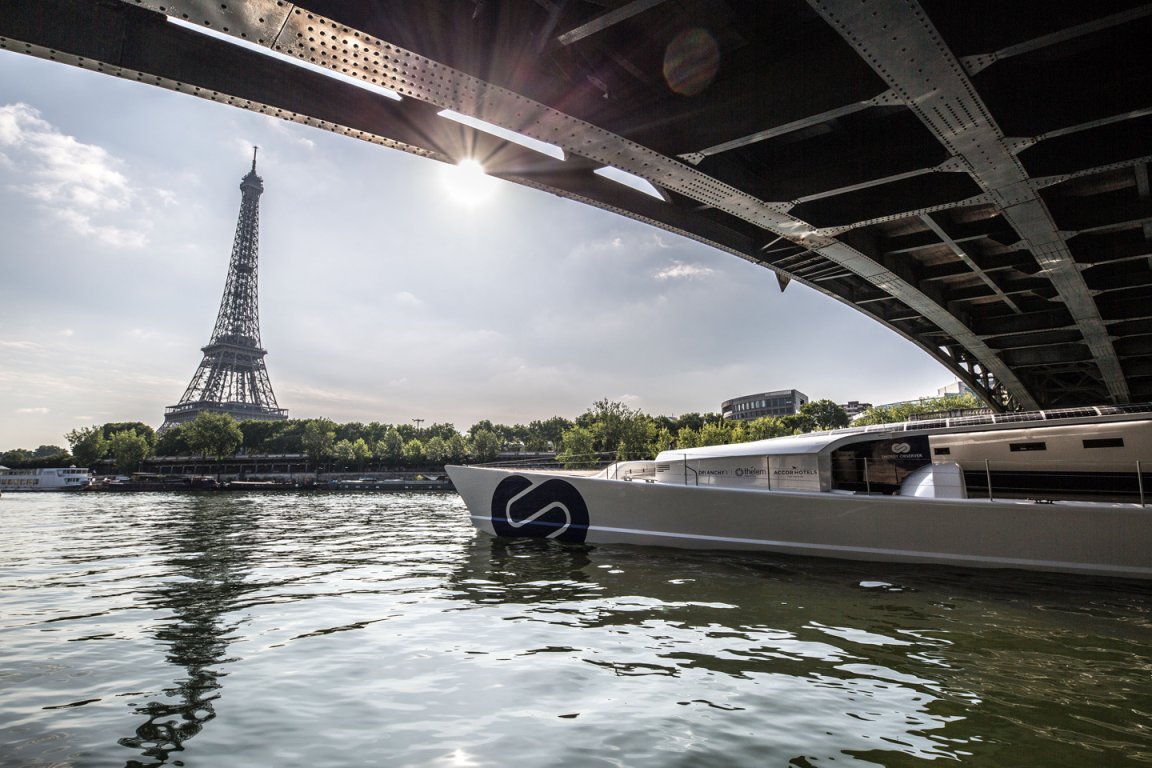
Emissions-Free Energy, Ahoy
The Energy Observer was once a racing boat, but now it’s on a more important mission: raising awareness and providing a practical example of emissions-free energy all over the world. It set sail from Paris on July 15, beginning a six-year global voyage. Throughout the trip, the boat will use solar and wind power from a kite sail and turbines during the days, and draw hydrogen from its reservoirs after the sun has set.
Energy Observer replenishes its hydrogen stores via electrolysis of sea water. This eliminates the problem with most hydrogen-fueled vehicles: “The problem is that 95 per cent of the hydrogen that you use already is made out of fossil energies,” skipper Jérôme Delafosse told WIRED UK in February. “We will produce hydrogen onboard from the ocean, we will clean and purify the water and then we will electrolyze it and then compress it in tank storage.”

Improving Solar Boat Technology
The 5 million-euro ($5.25 million), 30.5 meters (100 feet) boat was originally designed in 1983 for racing, and enjoyed success in open-sea sailing before its owners and captains, Frederic Dahirel and Victorien Erussard, teamed up with researchers, engineers, architects, and others to convert it into the Energy Observer project. The boat traded the standard solar battery for its hydrogen tanks, making it almost three times lighter than the last solar powered boat to circumnavigate the globe, MS Tûranor PlanetSolar. It can also move three times as fast, with a top speed of 42 knots. It will typically be cruising at eight to 10 knots as it makes its planned 101 stopovers in 50 countries all over the world.
The designers hope that this journey will model a successful use of emissions-free energy that could power the networks of our shared human future. “We want to demonstrate the use of renewable, green, zero-pollution fuel technologies and spread the message all over the world,” Erussard told Discover Magazine. The team also wants to explore and showcase other technological innovations that can help the environment. During the trip, the team will visit start-ups around the world which are using innovation to protect the planet. “This will include all the technological solutions aimed at protecting our planet such as creating corals using 3D printers, generating light from sea bacteria or creating plastic using seaweed,” Delafosse told Discover Magazine.
Hopefully as we all watch the long global voyage we’ll see not only a successful, practical deployment of green technologies in action, but also a host of other conservation-based tech in use by the crew.